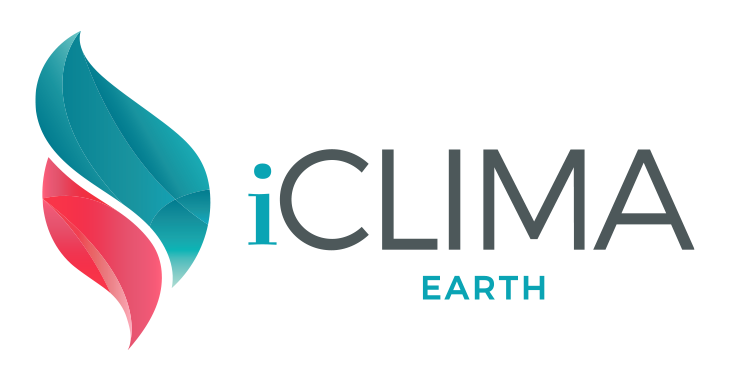As we wave goodbye to the high-profile COP26 summit in Glasgow, investors can rest easy knowing a glut of ESG ETF launches in recent years means they are bound to find products matching their climate convictions.
This surge in activity in the European sustainable investment space has been driven by no small sum of effort by the European Commission (EC) since the 2015 Paris Agreement, with the last four years in particular demonstrating just how prolific the multinational body has been on furthering climate finance.
In 2018, the EC published its foundational Action Plan for Financing Sustainable Growth which declared work would be done to create sustainable investment benchmarks, a taxonomy, disclosure regulation and a consultation calling on investment advisors and insurance distributors to recommend ESG products to their clients.
A year later, in 2019, the Paris-Aligned (PAB) and Climate Transition Benchmarks (CTB) were released by European Union, with both setting out lower carbon intensities than their parent indices and in turn, aiming to keep global temperature rises within more conservative ranges.
In 2020, the EC’s Technical Expert Group (TEG) on sustainable finance finished its two-year-long task of creating the Taxonomy Technical report which sets out which activities financial professionals should consider to be eligible for sustainable investment.
Most recently, the commission launched phase one of its Sustainable Finance Disclosure Regulation (SFDR) in March of this year, which imposes obligatory rules on asset managers to disclose how they implement ESG.
In the build-up to the Big Call: ESG Investors Forum event on Wednesday, and ahead of the anticipated launch of phase two of SFDR next summer, ETF Stream has selected five of the most popular and innovative climate ETFs.
1. Lyxor Net Zero 2050 S&P Eurozone Climate PAB UCITS ETF (EPAB)
Topping our list is Europe’s largest Paris-aligned ETF, the $1.2bn EPAB, which launched in July 2020.
Charging a total expense ratio (TER) of 0.20%, EPAB tracks the S&P Eurozone LargeMidCap Net Zero 2050 Paris-Aligned ESG index of 138 large and mid-cap European equities including ASML Holding, Sanofi, BNP Paribas, L’Oréal and Santander.
The ETF’s benchmark considers transition risk, physical risk and climate change opportunities alignment with the recommendations of the Financial Stability Board’s (FSB) Task Force on Climate-related Financial Disclosures’ (TCFD) 2017 report.
EPAB has dynamic weighting caps based on companies’ exposure to the physical risks of climate change and caps exposure to non-disclosing companies, while excluding all companies involved in controversial weapons and tobacco, ESG controversies, highly intensive electricity generation and those generating revenues from oil and natural gas processing and exploration.
The ETF is categorised as Article 9 under SFDR which means the EC is satisfied sustainable investment or carbon reduction are its primary objective.
2. Tabula EUR IG Bond Paris-Aligned Climate UCITS ETF (TABC)
Next, we have Europe’s first corporate bond climate ETF, the $38m TABC, which came to market in January this year.
With a fee of 0.25%, TABC tracks the Solactive ISS Paris Aligned Select Euro Corporate Bond index of 176 corporate bonds with an average maturity of five years.
To be eligible for inclusion, securities must be euro-denominated investment grade bonds that meet requirements for the PAB and a 1.5°C Paris scenario. Exclusions are applied to issuers involved in controversial weapons or tobacco, causing significant environmental harm or with revenues from oil, gas, coal and energy intensive electricity above certain thresholds.
Selected bonds are weighted to meet a minimum 50% initial reduction in greenhouse gas emissions versus the Solactive EUR parent index, a minimum 7% annual reduction in greenhouse gas emissions and sector, maturity and rating exposures within limits versus the parent benchmark. TABC is also categorised as Article 9 under SFDR.
3. Lyxor Green Bond UCITS ETF (CLIM)
Third is the $481m CLIM, which launched in February 2017, making it both the veteran of our list and the world’s largest green bond ETF.
With a TER of 0.25%, CLIM tracks the Solactive Green Bond EUR USD IG index of 578 euro and US dollar-denominated investment-grade green bonds issued by sovereigns, supranationals, development banks and corporates.
Whereas ESG and most climate products aim to exclude ‘worst offenders’ based on their sustainable investment mandate, green bond products are used to directly finance the climate mitigation and decarbonisation efforts of countries, international organisations and companies.
The constituents in CLIM’s underlying index have all been defined as eligible for inclusion by the non-profit organisation Climate Bonds Initiative. Like the other Lyxor product on our list, CLIM is categorised as Article 9 under SFDR.
4. iClima Global Decarbonisation Enablers UCITS ETF (CLMA).
Our penultimate entry and the only thematic ETF on our list is CLMA which debuted in December last year and has gathered $63m AUM.
With a fee of 0.65% and tracking the iClima Global Decarbonisation Enablers index of 162 stocks, CLMA offers 2%-capped exposure to companies involved in renewable energy, green transportation, water and waste improvements, decarbonisation enabling solutions and sustainable products.
Like CLIM, CLMA prefers an approach of investing directly in projects contributing to global decarbonisation, rather than the usual suspect companies that do the least harm.
Unlike many climate-friendly thematic ETFs, CLMA sets itself out by not focusing on one industry, such as renewable energy, but also weighting to companies from several other sub-industries contributing to reducing CO2 emissions.
These include EV companies such as Tesla and Plug Power, power grid software provider Generac, waste collection firm Republic Services, sustainable living and health firm Koninklijke DSM N.V. and public transportation service providers such as East Japan Railway Co. CLMA is classified as Article 9 under the SFDR.
5. FlexShares Emerging Markets High Dividend Climate ESG UCITS ETF (QDFE)
Finally, launching in September this year and amassing $5m assets, QDFE is the smallest and youngest ETF on our list.
With a TER of 0.35% and tracking the iSTOXX Northern Trust Emerging Markets High Dividend Climate ESG index of 166 emerging markets stocks.
QDFE’s investment is defined by excluding companies involved in thermal coal, weapons, tobacco and those violating ‘international norms’ from its parent index.
All remaining constituents are then ranked using a multifactor quality and high dividend approach whereby those with the highest long-term income distributions, profitability, management expertise and cash flow are viewed more favourably.
Finally, the measurement of alignment with climate and ESG targets is performed using Northern Trust ESG Scores, Northern Trust ESG Exclusion Flags and ISS ESG carbon data. QDFE is classified as Article 8 under SFDR, meaning it promotes ESG characteristics, among others.






